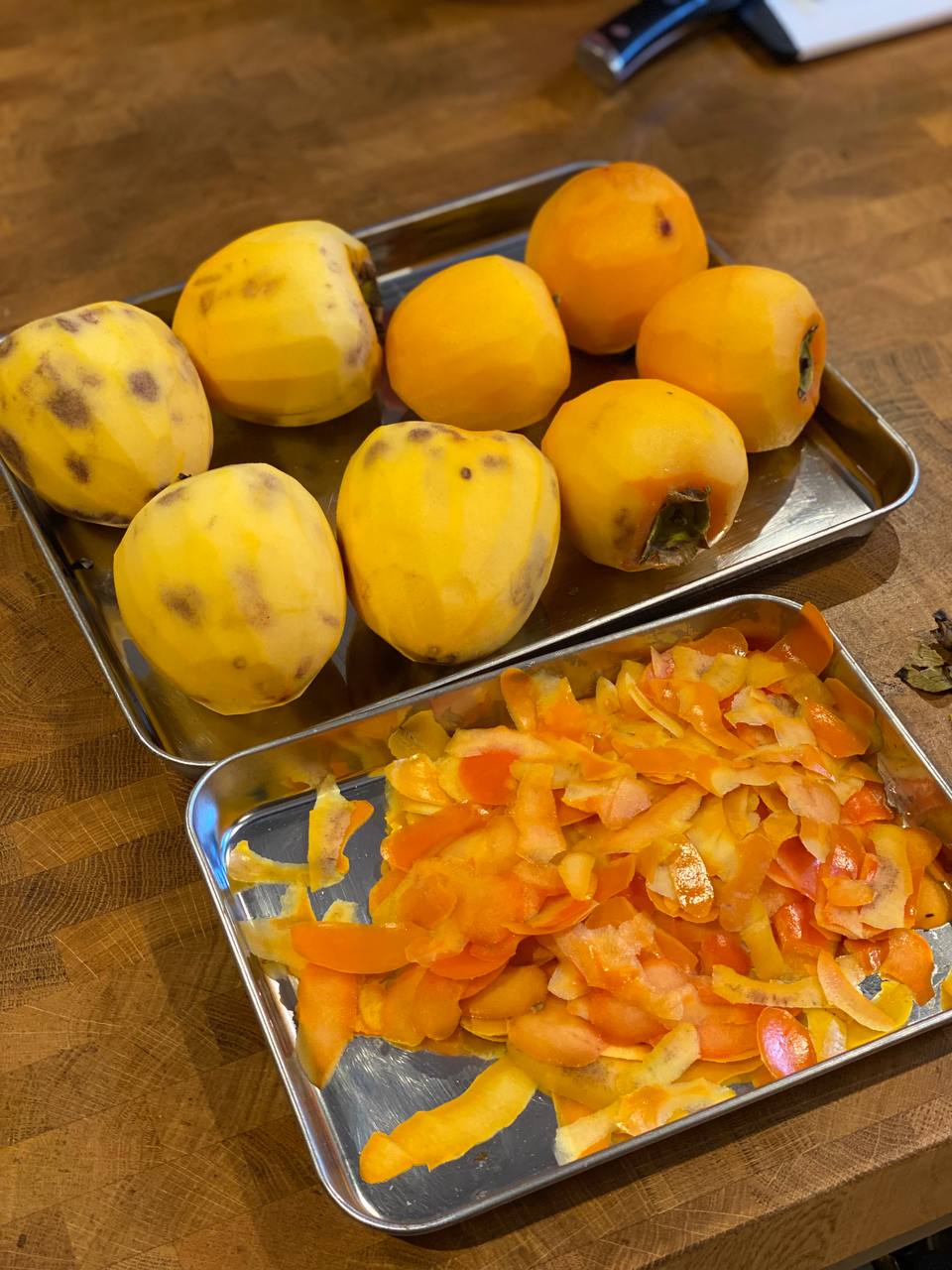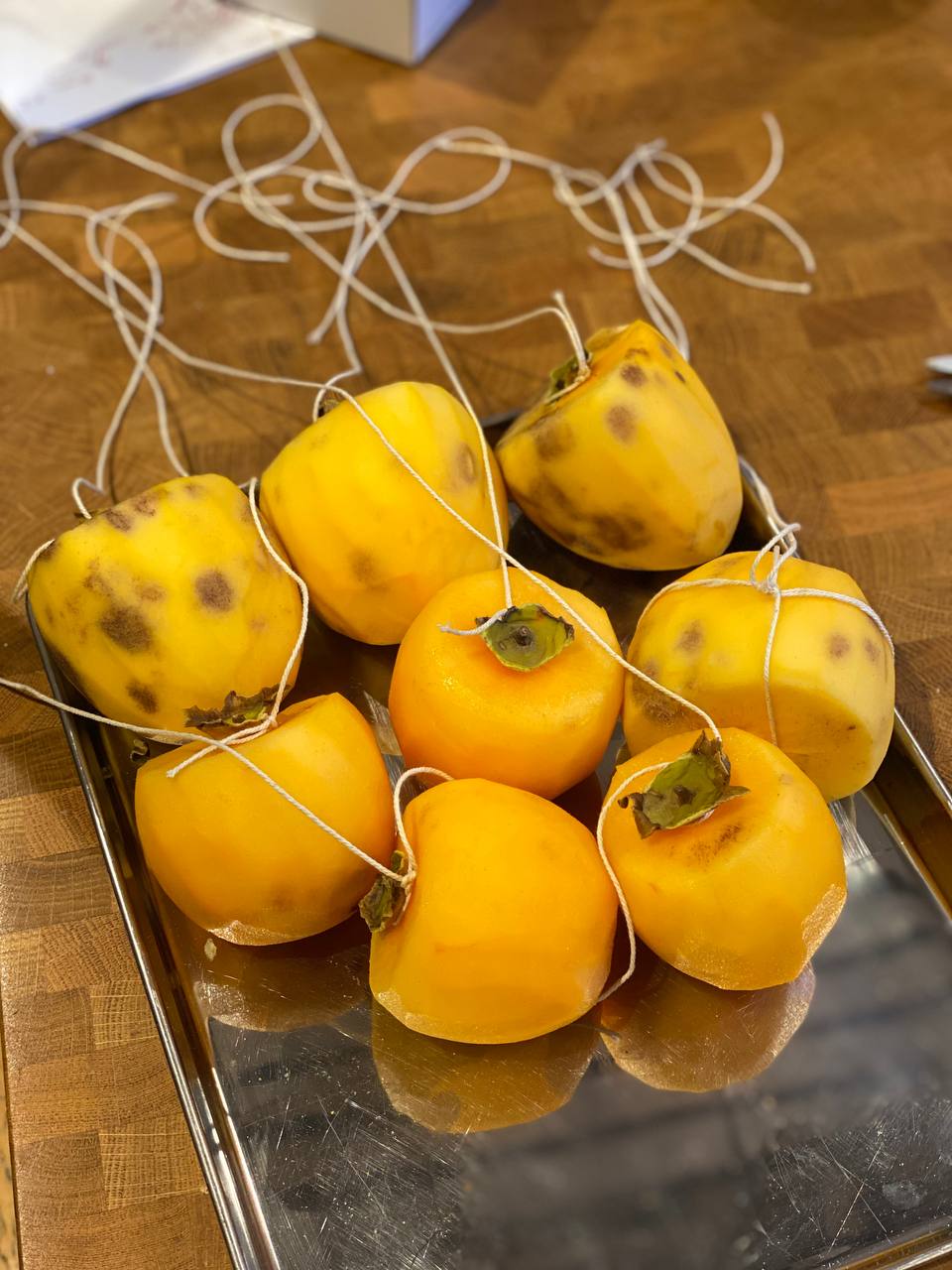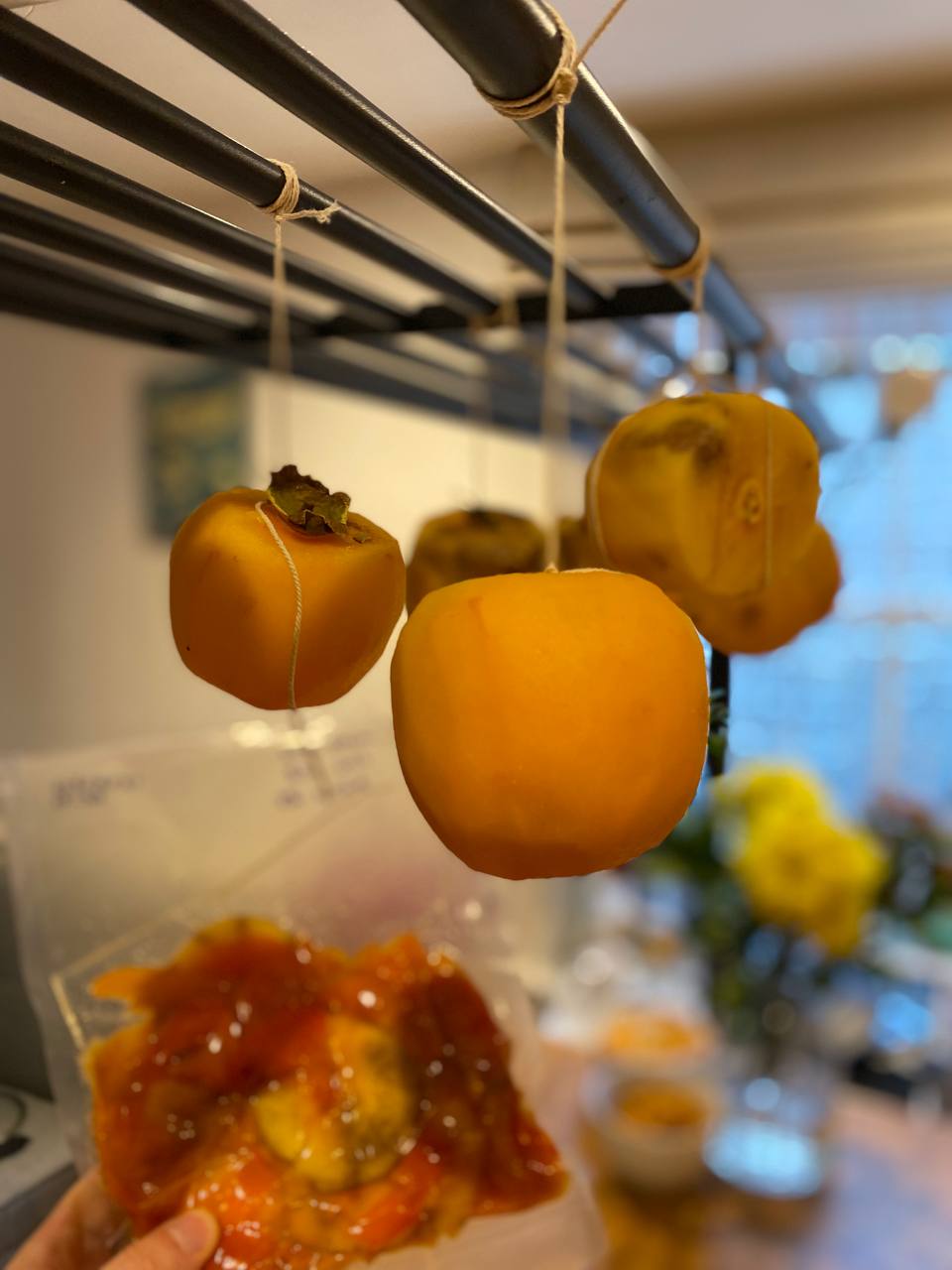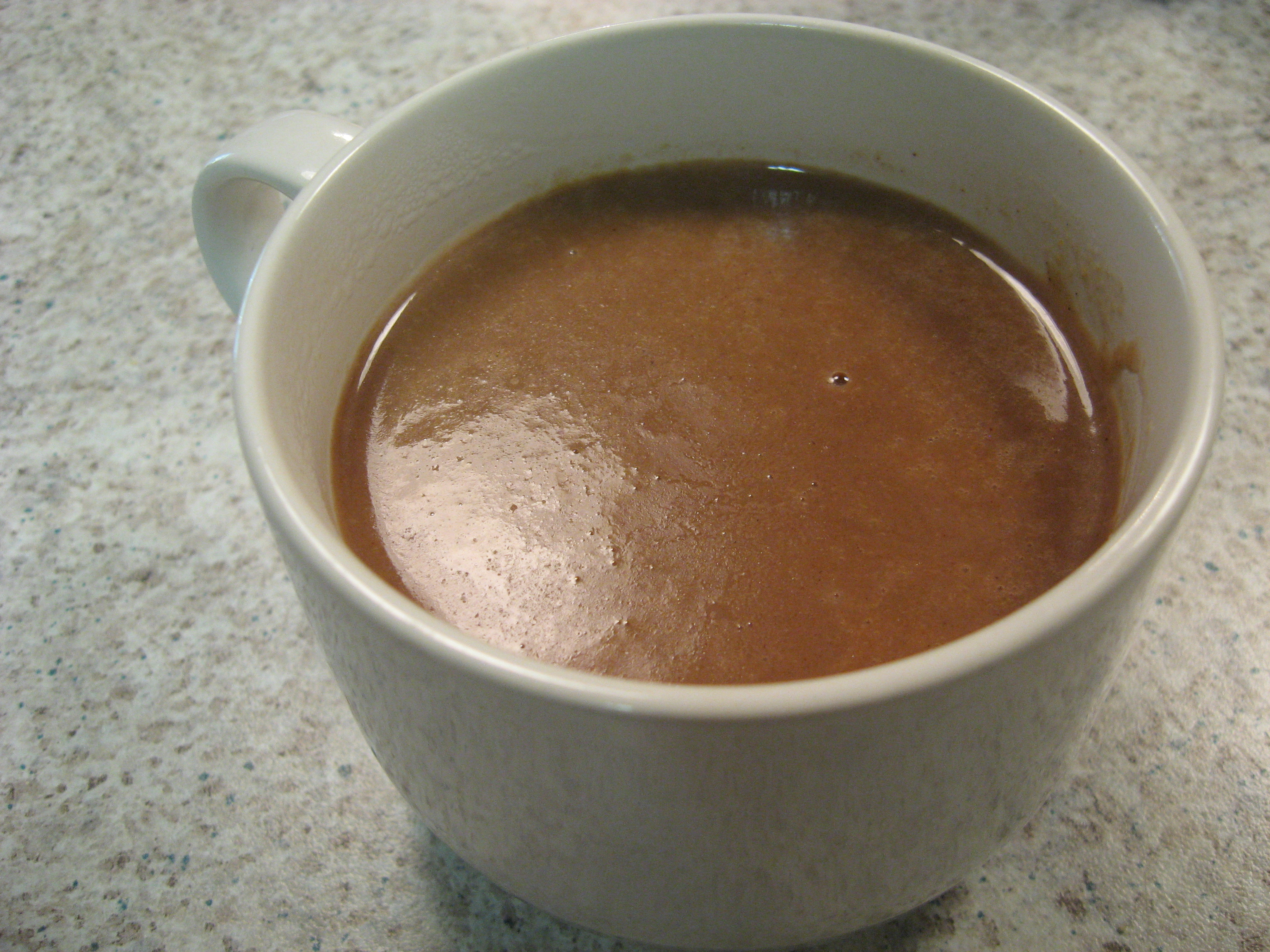Tuesday Triage #69
- TUESDAY TRIAGE #69 by Vadim Drobinin
- On Autumn air
- Things I enjoyed reading
- 1. Energy, and How to Get It by @NickPaumgarten
- 2. Write Thin to Write Fast by @breckyunits
- 3. Learning to Speak Shrub by Elizabeth Preston
- 4. A Death Full of Life by Gabrielle Anctil
- 5. The Feynman Technique: The Best Way to Learn Anything by fs.blog
- 6. The Great Organic-Food Fraud by Ian Parker
- 7. Float On, Cocktail Float by Al Culliton
- 8. Leave your ego at the door by @merowing_
- 9. Beg Bounties by @troyhunt
- 10. No Snickering: That Road Sign Means Something Else by Sarah Lyall
- Things I didn't know last Tuesday
- 1. Starch retrogradation
- 2. Tallboy
- 3. Champurrado
- 4. Dead Vikings Got Endless Beer from Goats
- 5. An American businessman attended a reading of A Christmas Carol and changed
- 6. Windows2000.com owner sells domain to Microsoft
- 7. Wrap rage
- 8. Tea superstitions
- 9. Wi-Fi etymology
- 10. Cracking knuckles doesn't cause arthritis
- Book of the week
- Thank you and see you in a week!
TUESDAY TRIAGE #69
by Vadim Drobinin ¶
Your weekly crème de la crème of the Internet is here!
09.11.2021 (read in browser)
-
Intro
Whatever is on my mind this week. -
Things I enjoyed reading
Ten-ish articles I found worth reading. -
Things I didn't know last Tuesday
Ten-ish facts I didn't know when I wrote the previous edition. -
Book of the week
Some thoughts on the latest book I've read.
On Autumn air ¶
One of the beauties of leaving in the UK is getting a very long Autumn, which gradually shifts from an Indian summer in September towards the pre-Christmas haze of late November.
Back in Russia it was never the case, as a +20ºC Summer afternoon could turn into a miserable +2ºC morning in a matter of hours.
Here, we can devour the shift from green leaves towards bare trees over many weeks, and not get bored of it.
On the other hand, a long Autumn brings flu, cold, and pretty much everything else, so this week I've been mostly dealing with a bunch of side effects from both an ilness and the amounts of liquid I have to consume to get well faster.
That took a toll on my cooking schedule, but at least I had enough energy to prepare a small batch of hoshigaki, Japanese dried persimmons.
To make one, you need to peel hachiya persimmons (I use them, but also the Sharon Fruit variety), which are naturally very tannic so have lots of sugars.

Level off their tops, and attach some butcher's twine to them.

And then hang them in a place with balanced humidity. After a week I will start "massage" them daily to help sugars to move to the surface, and eventually they will reduce in size, turn black and get covered in white crystals, which are actually sugars, not mold. Also I got all leftovers including peels in a bag for lactofermentation. Maybe they will go into some homemade hot sauce.

Hopefully by Christmas everything will be finished: I will keep you posted.
Things I enjoyed reading ¶
1. Energy, and How to Get It by @NickPaumgarten ¶
Energy is one of the best resource one could get access to, and if something gives you enough power to stay up late at night or not get sleepy during the day, it already puts you a few steps higher than most other people in the race.
There are people who's level of energy is higher by default, and people who struggle with converting things into energy efficiently.
Seems like there are certain ways to boost one's energy without using caffeine and essentially other drugs:
I took long, aimless walks that I imagined would add weeks to my life, like injury time in a soccer match. (It would take a lot of injury time to make up for the hot dogs, if, as a recent study suggested, each one shortens the life span by thirty-six minutes.) Harder work, not surprisingly, yielded higher scores. Jog, or bike, or run stairs, then excitedly check the app. The lure of better numbers, more carrot than stick, was energizing in itself, even if the ring’s criteria seemed kind of arbitrary, maybe overgenerous. The instrument is blunt, but it will cut.
Maybe it's about time I put this Apple Watch back.
2. Write Thin to Write Fast by @breckyunits ¶
Something I never considered before despite writing code on daily basis: line limits.
As developers, we care about how many characters a single line of code is limited to. It goes back to the times where screens couldn't fit more than 80 characters, and so to prevent people dealing with your code in the future from odd formatting engineers would stick to a convention.
But the autor suggests that with writing it could actually benefit the creator as well:
Every word in a great piece of writing survived a brutal game of natural selection. Every review by the author was a chance for each word to be eliminated. The quality of the surviving words are a function of how many times they were reviewed. If the author reviews their writing more, then the words that survive should be fitter.
But moving your eyes takes work.
I tried this approach for a bit working on this week's edition, and so far can't really tell for sure if I got more productive as a writer or not, but that's definitely something I am keen on exploring a bit more.
3. Learning to Speak Shrub by Elizabeth Preston ¶
While there are some odd and weird examples of scientists trying to talk to plants, a legitimate research happens too:
Plants speak in chemical codes—carbon-containing molecules called volatile organic compounds (VOCs). Characterized by the ease with which they enter the air, VOCs are a diverse group: plants alone make more than 30,000 varieties. Some VOCs produce familiar herbal or flower smells.
The article itself goes into more details on how plants can use that to attract specific predators or call for help.
4. A Death Full of Life by Gabrielle Anctil ¶
Humanity's relationships with death never really evolved: we learnt to think of many things quite differently comparing to what we used to thousands years ago, but death seems to be an exception.
However, something is changing:
It’s not surprising to see burial places declining in popularity, given our society’s profound fear of death. In some parts of the world, devotees are trying to find new functions for these spaces, to invite the living to make use of them again. In Germany, Café Strauss offers the chance to sip a latté in the company of ghosts. In Melbourne, Springvale Botanical Cemetery organizes outdoor movie nights and jazz shows. In India, a restaurant was even built around a dozen coffins. There’s something ingenious about these initiatives, but they don’t resolve the initial problem: death terrifies us.
And even though the initial problem persists, these first steps to getting more used to it are quite welcome (even though some religions already did way more steps towards it).
5. The Feynman Technique: The Best Way to Learn Anything by fs.blog ¶
Richard Feynman did lots of great things, including writing a book which maintained my love for STEM disciplines for years, so no surprise his method for learning pretty much anything is quite straightforward and obvious, and yet most likely very effective.
Jargon hides our lack of understanding. When forced to write out an idea from start to finish in simple language, you discover where you struggle … where it doesn’t quite make sense … where you get frustrated … where you don’t really understand as well as you thought. Only by identifying gaps in your knowledge can you fill them.
The article itself is quite short, but the method in a nutshell boild down to explaining something you want to learn to a child as many times as it is needed to fully understand.
6. The Great Organic-Food Fraud by Ian Parker ¶
Probably something we'd see even more often in the future: as tracing back is rarely simple, claims about organic food, biodynamic wine, and other similar things would be lies more and more often.
More than in most retail transactions, the organic consumer is buying both a thing and an assurance about a thing. Organic crops are those which, among other restrictions, have been grown without the application of certain herbicides, pesticides, and fertilizers. Close scrutiny of a crop of non-organic tomatoes might reveal that they had been exposed to these treatments. But it might not.
I don't really get the "organic" trend myself. If buying a chicken, I look at the chicken, not the label, and to me it doesn't really matter how it was raised as far as it doesn't affect the taste (and usually it doesn't). It's obviously nice to know that the carrots you get were grown without additives, but frankly if those additives made them better, than why not?
7. Float On, Cocktail Float by Al Culliton ¶
I am not a huge fan of anything too sour or too sweet, and as a result very rarely order sours. The only exception is probably the New York sour, which is essentially just a classic whiskey sour (equal parts of something sweet and something sour, and then twice more of a base spirit, in this case, whiskey), but always shaken with an egg white for a nice foam, and then a bit of red wine floated on top.
Done properly, it's a beautiful and nicely balanced drink, and people rarely get disappointed.
This, some say, leads to an imbalanced drink as one sip may vary from the next. What the naysayers fault, however, the float’s proponents praise. Ginsberg asserts that the float allows the drink to “develop” as it’s consumed. For them, the lack of uniformity takes the guest on a journey while they’re drinking.
Seems like these days more and more folks experiment with other floats, including transparent liquids (think orange water) for the very same reasons.
8. Leave your ego at the door by @merowing_ ¶
Something to continue the topic of passionate vs impassionate developers, but from the bigger picture's perspective:
No matter how great of an engineer you are going to become, there is only so much output one person can generate.
But if instead you focus on finding ways to empower others, whether that’s through mentoring, dev tools or other means, you’ll become a multiplier rather than just an individual contributor. If you believe in the idea of a 10x engineer, that would be that kind of person.
This is also the reason I always loved working more on tools and mentoring, rather than moving buttons on a screen. Chores are important, and everyone should have a share at doing them, but a properly functioning CI might make the life of the whole team significantly better, and users will eventually notice that.
9. Beg Bounties by @troyhunt ¶
A much-needed post on so-called "beg bounties", attempts to automate security audit and then ask for money in exchange for some low-risk issue with a setup or a server.
Want to be a bounty beggar? It's dead simple, you just use tools like Qualys' SSL Labs, dmarcian or Scott Helme's Security Headers, among others. Easy point and shoot magic and you don't need to have any idea whatsoever what you're doing!
There is nothing wrong with using automated tools, it helps both beginners and seniors, but the moment you decide to withhold any information about a vulnerability without a payment you stop being a white hat. And that's what matters.
10. No Snickering: That Road Sign Means Something Else by Sarah Lyall ¶
A hilarious selection of funny UK-based toponyms, and how locals deal with their unwanted fame (or for that matter, struggle when ordering pizza).
The consensus in the village is that there is a perfectly innocent reason for the name “Crapstone,” though it is unclear what that is. Theories put forth by various residents the other day included “place of the rocks,” “a kind of twisting of the original word,” “something to do with the soil” and “something to do with Sir Francis Drake,” who lived nearby.
Some of the examples are actually quite good, and I would love to live their for a few months just to be able to mention it on my application forms when asked about the previous address.
Things I didn't know last Tuesday ¶
1. Starch retrogradation ¶
Do you know why bread (and many other baked goodies) turn into stone in the fridge?
Retrogradation is a reaction that takes place when the amylose and amylopectin chains in cooked, gelatinized starch realign themselves as the cooked starch cools.
So the only way to keep something starch-based soft is to either keep it warm, or chill rapidly and then freeze.
2. Tallboy ¶
Texas folks love the abundance of things, and it applies to beer as well, so their cans are 750 ml.
Though 12-oz cans have long been the standard, the 16-oz pint can, also called a “tallboy,” is becoming trendy for many craft brewers. These are most often sold in 4-packs.
At least they sell them in four-packs.
3. Champurrado ¶
I tried this corn-based hot chocolate only ones in my life, surprisingly in a St. Petersburg bar in the middle of winter, and yet I still remember the flavours.
Mexican atole, a hot drink made from corn, comes in a staggering variety of flavors, from sweet to savory, each one more delicious than the next. In this sweet one known as champurrado, the corn-flavored base, made from masa harina, is enriched with dark chocolate and cinnamon for a warming, aromatic beverage that's perfect for winter.
Now as I know how it is called (and also have the proper corn flour), nothing stops me from sipping it on par with mezcal for the rest of the year.

4. Dead Vikings Got Endless Beer from Goats ¶
One more argument for Norse Paganism and all things Vikings: they had endless beer and goats.
Vikings believed that warriors who went to Valhalla would be rewarded with an endless supply of (we assume) quality beer, dispensed from the udders of a goat. We’re not sure whether the goat udders would give the beer that kind of barnyard funkiness, but either way, it still seems like a good deal.
Now I am really curious what part of their culture managed to assign the beer-making function to a goat. Surely vikings knew how the beer is made?
5. An American businessman attended a reading of A Christmas Carol and changed ¶
I always wondered if books full of moral objectives actually work, and seems like they indeed are:
In 1867 one American businessman was so moved by attending a reading, that he closed his factory on Christmas Day and sent every employee a turkey.
Judging by the article, it wasn't even a single example. The book actually made the world a slightly better place (even if only for a few days).
6. Windows2000.com owner sells domain to Microsoft ¶
Hard to imagine these days, but in early 2000s Microsoft would trade domains with ordinary people (and most likely even pay on top of it).
[Bob] Kerstein, formerly an accountant, has concluded a deal with Microsoft whereby Microsoft gets the trademark and domain name, and Kerstein gets bob.com, which Microsoft had obtained in 1996, at the height of Bob's, well, failure.
Today they'd probably call in the copyright infringement and sue any domain owner, just saying.
7. Wrap rage ¶
There is a common name for anger towards hard-to-open packages, and seems like hundreds of people end up in ER annualy for related reasons.
Wrap rage, also called package rage, is the common name for heightened levels of anger and frustration resulting from the inability to open packaging, particularly some heat-sealed plastic blister packs and clamshells. People can be injured while opening difficult packaging: cutting tools pose a sharp hazard to the person opening the package, as well as its contents. Easy-opening systems are available to improve package-opening convenience.
It's a bit awkward to admit, but I am somewhere within that statistics too. Circa 2010, I woke up way before everyone else and tried to open my Christmas gift (or better to say, New Year's) with a stationery knife.
Fast-forward twenty seconds, I am silently sprinting towards the bathroom with the whole blade inside my palm: the scar is still on my hand as I am typing it.
The wrap rage is real.
8. Tea superstitions ¶
I am not really surprised there are sayings about tea, especially here in the UK, but some of them are pretty hilarious and are very different from the ones I heard in my childhood:
In some parts of Britain, they believe that if bubbles floating on the top of a cup of tea can be lifted with a spoon and transferred to the mouth without the bubbles touching the sides of the cup or the spoon, there will be a letter in the morning. In other regions, floating bubbles indicate that you will be rich and the more bubbles the better. If bubbles stick to the side of the cup, then romance is in the air and each bubble represents a kiss.
Check out the link for even more wacky examples.
9. Wi-Fi etymology ¶
If you ever wondered what consulting firms do, here is a great example: when asked to come up with a human-readable name for a new technology, folks came up with the word "Wi-Fi", which has no meaning. It just sounded nice.
The name Wi-Fi, commercially used at least as early as August 1999, was coined by the brand-consulting firm Interbrand. The Wi-Fi Alliance had hired Interbrand to create a name that was "a little catchier than 'IEEE 802.11b Direct Sequence'."
[...]
The name Wi-Fi has no further meaning, and was never officially a shortened form of "Wireless Fidelity".
These days people claim that it's all about being wireless, but seems like there are no proofs it actually played part in the word's etymology.
10. Cracking knuckles doesn't cause arthritis ¶
Another childhood myth debunked for me: there is (almost) nothing wrong about cracking one's knuckles: back at school I'd be told off for doing that as "it could lead to lots of problems with hands".
Cracking your knuckles may aggravate the people around you, but it probably won't raise your risk for arthritis. That's the conclusion of several studies that compared rates of hand arthritis among habitual knuckle-crackers and people who didn't crack their knuckles.
To be fair, I never stopped doing it. Just became a bit more nervous. Well done, school!
Book of the week ¶
After a short break I am back to reading biographies, and this time it's an odd one, partly because the author is mostly famous for his acting, and partly because the book sometimes starts to spill cooking recipes which occasionally make zero sense.
Nonetheless, despite just wrapping up the first third, I really enjoy the stories the author tells about his childhood of an Italian in the States, and then for a year in Florence, and then in the States again: all while slowly falling in love with food.
From Stanley Tucci's Taste:
While my dad and I were moaning with delight, I noticed my mother chewing slowly, her eyes fixed in a stare as though she were trying to make the flavors of what she had just put into her mouth permeate every last taste bud. A moment passed, and Kate looked at her and bravely asked, “What do you think, Joanie?”
My mother continued to chew silently with her eyes still focused on her plate. After a slight, and not un-tense, pause, she looked at Kate and said, “I have nothing left to teach you.” And then she started to cry.
Kate was beaming as she hugged my mother. The rest of us laughed.
And then we devoured the lasagna.
This is a beautiful confirmation of the fact that food holds way more memories, and connects people stronger than many other bonds.
I don't remember many things about my childhood, but I remember lots of dishes, and using them as anchors can revive faces of people I probably seen only once in my life: it works especially well with various extended family dinners I had to attended in my youth.
This is also a great litmus test for pretty much anything you it: whenever I bother putting effort into going out to a restaurant, I ask myself if the food there would be memorable enough to remember in a few years. And if not, it might not be worthy of time and money, and something trustworthy, like McDonald's would be better.
Thank you and see you in a week! ¶
If you have any questions, or want to suggest a link for the next newsletter, please drop me a message on Twitter or reply to this email.
Cheers! 🍸